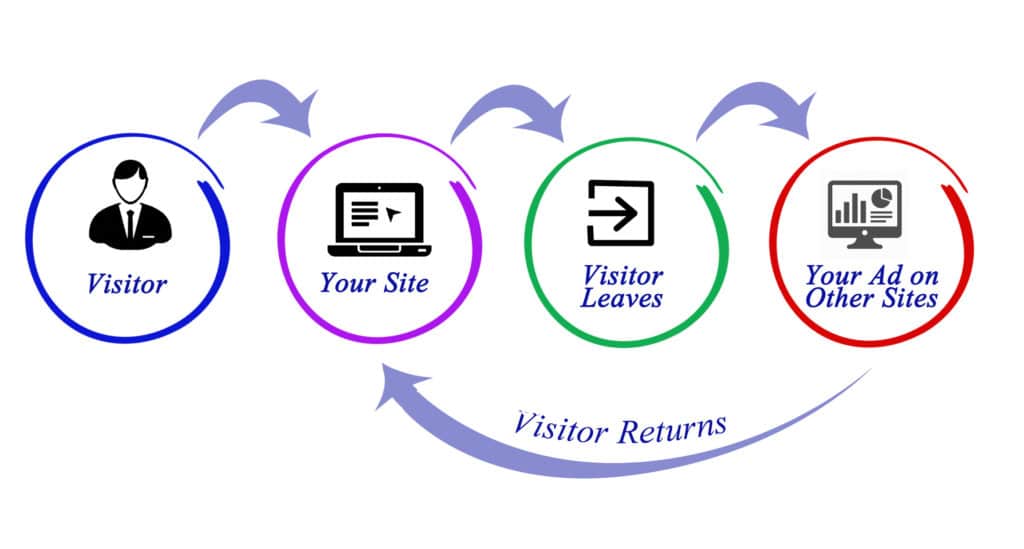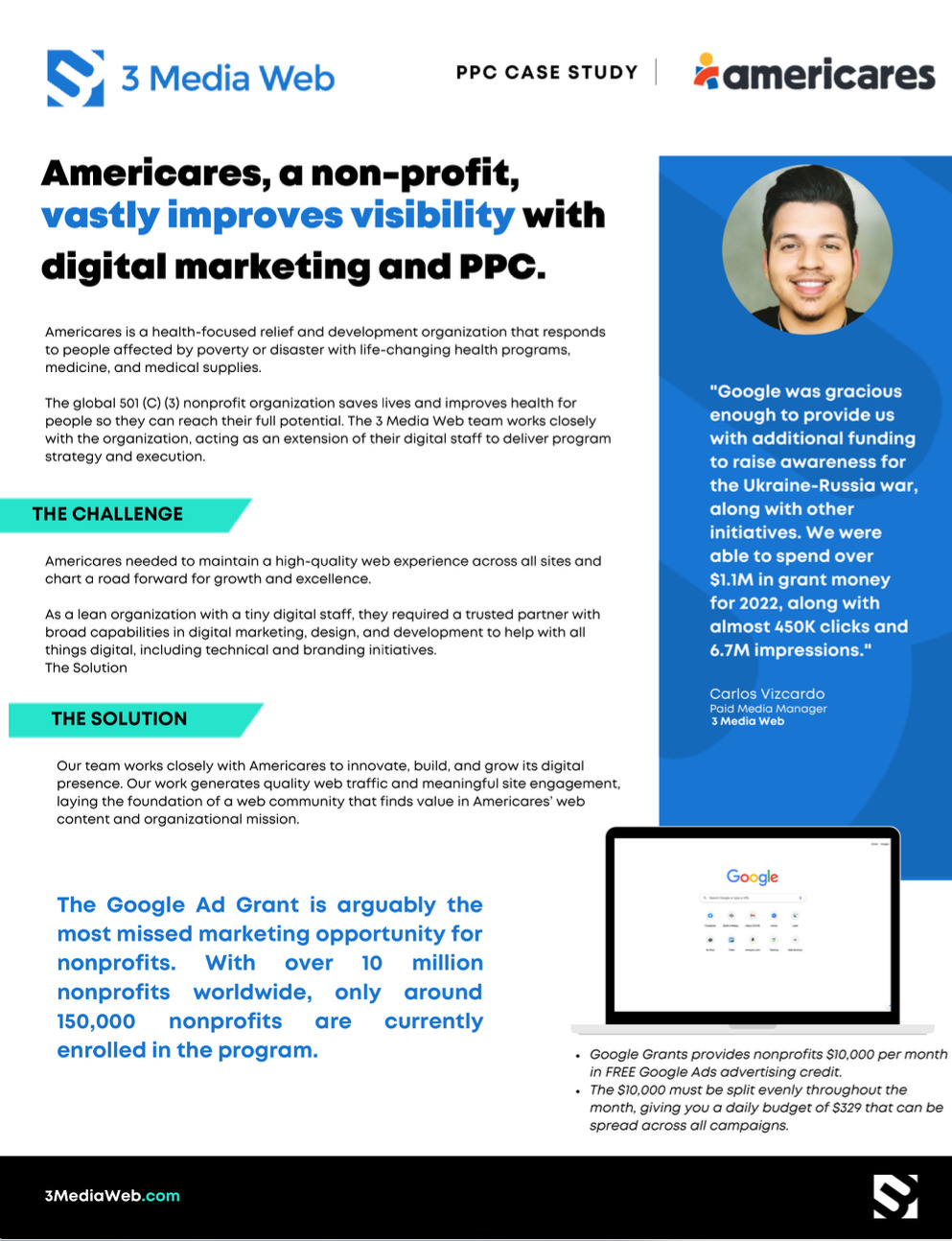When guests arrive at your holiday party, do you immediately throw them into the maelstrom of snacks, music, and tomfoolery? Or, do you let them get settled first? Landing pages are just as important to your PPC ad campaigns as a foyer is to your home. Give PPC ad targets a chance to take off their coat and get comfortable before introducing them to your business.
Visitors need to have a sense of control, whether they’re visiting your home or your website. Visitors that land on your landing page experience the lite version of your website before they become fully immersed in your brand on your main website. They get a simplified offer, some introduction photos or videos that explain the offer or your business, and a clear, straightforward call-to-action as a next step.
They can take that next step or leave. If they take that next step, you get another chance to build the relationship between your business and that customer.
Capture and Engage Your PPC Ad Traffic
Clean minimal designs will focus your PPC traffic audience’s attention on only the most essential benefits of your offer. You can even include richer multimedia like photos or videos to attract their attention. Keep your designs simple, only including the elements that are most likely to inspire them to take action.
One advanced technique is to use dynamic content on your PPC landing page. For example, you can set up the title of your landing page to dynamically use the search keyword that the user typed to find your page. That way, they see the symmetry between your search ad and the landing page. That connection that through-line is more likely to drive them to convert into a qualified lead.
Test and Adapt Your Landing Page Quickly and Efficiently
Aside from being a simple page, your PPC landing page also offers you a unique testing platform outside of your more complicated main website. Instead of leaving your marketing teams at the mercy of your development roadmap, your marketing team can quickly make changes to the landing page constantly. That way, you can learn and use careful experiments to drive more conversions.
This is another reason why using trusted tools like Unbounce or Instapage is the best option. Rather than creating new pages on your website to welcome PPC ad traffic, landing pages can offer a more flexible alternative. It also means you can retire landing pages with a few button clicks after the campaign is over without worrying about 404 errors or redirects for your web development teams to create.
Why Your Website Isn’t Right (At Least For Now)
If you already have a well-optimized website, you might be wondering why landing pages are important. Isn’t your website enough? It’s not that your website isn’t enough. It’s more that it’s too much to take in all at once.
Even an optimized website is likely to have multiple calls to action on a page. PPC landing pages are simplified, with only one primary CTA, which makes them so successful. Let your website be the landing page for other channels, such as your organic search campaign or direct traffic, but keep your PPC ad traffic focused on conversions with a landing page.
Focus Your Traffic with a PPC Landing Page
Guests to your business’s home on the internet need a chance to get comfortable with your brand before becoming a marketing qualified lead. PPC landing pages can act as that introduction, that foyer to your holiday party.
Give PPC ad targets a sense of control before they become fully immersed in your brand on your main website. Use a minimal design and a simplified offer to get them started before introducing them to the rest of your brand online. That helps them take the straightforward call-to-action as a next step and further build that relationship with your business.
Ready to get started? Reach out to 3 Media Web today to drive more qualified leads.
The Important of Retargeting to PPC Campaign Success
When a consumer visits and abandons a retail website, it can be for a variety of reasons. Some common reasons for visiting a retail website but not buying anything include price shopping, their credit card was not handy, or simply forgetting about making a purchase and going off to do something else.
Of course, a consumer often leaves a retail website because they are simply not interested in making a purchase. However, it makes good marketing sense to stay in touch with that traffic. The consumer could change his or her mind! The way to do that is through retargeting.
What Is Retargeting?
When a consumer visits a retail website, a cookie is put into that consumer’s browser history. If that consumer does not complete the buying process, then that cookie is used to show the consumer display ads on other websites. These ads remind the consumer of their visit to the original website. This is the act of retargeting consumers who showed an interest in a website’s offering but did not initially take action to complete a sale.
What About Remarketing?
Remarketing is a Google term created to describe email campaigns created to target consumers who abandon shopping carts. In many marketing discussions, the terms retargeting and remarketing are used interchangeably. This is technically correct. But retargeting is the term for the broader act of targeting consumers who previously showed interest in a website.
How Does Retargeting Work?
When a consumer visits a website and then leaves without buying anything, digital marketing experts can use the cookie information to determine important demographic information about the consumer (location, browser preference, computer type) and which specific pages the consumer visited. Cookies can even be used to tell what specific products consumers spend the most time looking at.

The information that is collected is used to create very specific advertising campaigns for targeted groups of people. Digital marketing companies have large advertising networks set up that will recognize the cookie information and show display ads to specific consumers based on the particular retargeting campaign. For example, imagine a consumer who spent time on a car parts website but did not buy anything. They would then see display ads from that website on other websites they visit. In this way, the consumer is reminded about his or her interest in car parts.
Why Use Retargeting?
Retargeting is an essential part of digital marketing that will significantly increase the return on a company’s marketing budget. It can bring back a consumer who showed interest in a product but did not purchase it. Retargeting also gives retail websites the chance to create very detailed profiles of the traffic that visits their websites each day.
In advertising, brand recognition is a critical element in increasing client revenue. Retargeting puts a company’s display advertising in front of a consumer regularly. This creates and enhances brand recognition.
That repeated exposure of display advertising to select consumers helps to increase a marketing client’s return on investment significantly. With retargeting, the impressions purchased on a PPC network can be used to only target people who have shown a previous interest in the website’s offerings. This then brings in targeted traffic to a retail website.
In the hands of an experienced marketing professional, retargeting can be an extremely effective tool to generate revenue. One of the details that can be controlled in retargeting is how often and on how many websites a consumer will see a particular retailer’s ads.
Too much exposure will cause the consumer to turn away from the advertiser. But the right amount of exposure on the right websites can bring in targeted web traffic that is ready to buy.

